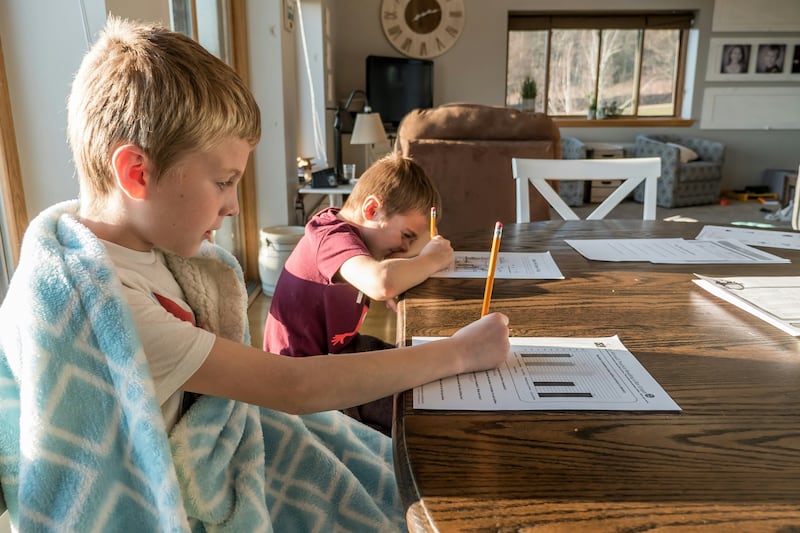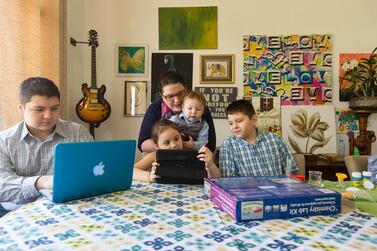The wet and stormy weather sweeping the UAE has led to government directives for schools to close and pupils to switch to home learning.
For parents juggling work commitments and numerous other daily tasks, having children at home and taking on responsibility for their schooling can be a daunting prospect, no matter how temporary.
Whether you have little ones who require more attention and guidance, or older children who can self-manage their workload, here are six ways to stay on top of the homeschooling situation.
1. Don’t expect to get everything done
Your home is a home, not a classroom and you probably don’t have the resources that a fully equipped school does. This doesn't just include materials, but also the time and attention you can devote to playing “teacher” and overseeing lessons.
Tasks that typically take an hour at school may take longer or shorter at home because of the different environments.
Adhere as closely to the school day as you can, ending tasks when the allotted time for the lesson is up, even if it means not completing the full list of questions or finishing the whole task.
2. Use the class WhatsApp as a resource
Struggling with a lesson? Have no idea how a particular task is meant to be done? Lost all the QR codes for online learning?
With teachers probably being inundated with emails from panicking parents, it’s far quicker and easier to take to the class or year WhatsApp group chat to ask a question or seek advice.
There, you’ll probably find that other parents have the same queries or issues as you do and can offer advice, or that one of them has already spoken to the teacher and has the answer. Other parents can be an effective support system during home learning.
3. Be relaxed about where the children work

Teenager lounging on their bed with a laptop? Younger children sat in a beanbag on the floor or at the kitchen table? Don’t worry about where your child does their schoolwork, let them work where they feel most comfortable.
While some parents may prefer to allocate an area of the house where the schoolwork gets done, if you have children of different ages, it could be beneficial to let them stay in different areas of the home, so they can work at their own age-appropriate pace.
4. Take regular breaks
Homeschooling can be stressful, as having children at home unexpectedly can upend schedules and plans. Take breaks after each lesson to reset for the next and let you move from English to maths to Arabic to science without feeling overwhelmed.
Remember that at school, children don’t sit still and slog away for the full hour. They talk to friends, listen to the teacher and move around the classroom. Allowing frequent breaks at home is an easy way of replicating the environment.
5. Prioritise your work
Having children doing lessons from home doesn’t mean everything else stops, and if you're working from home, you may still have calls to make and meetings to attend.
It’s OK for children to see that while you’ll support them however you can, you still have commitments to prioritise. Set children the task of completing lessons by themselves, with the understanding that they can only come to you for the final five or 10 minutes of each hour, which you can dedicate to going over issues and answers.
In this way, you won’t be bothered every two minutes by calls of “mum” and “dad” to help, but can carve out chunks of time throughout the day allowing you to attend to your own work.
6. Create a home classroom
If homeschooling continues, consider inviting your children’s friends over to work together, if it’s safe for them to travel.
Alternatively, set up video calls with friends, so they can do certain subjects together while enjoying the kind of chat they would usually have in the classroom.






